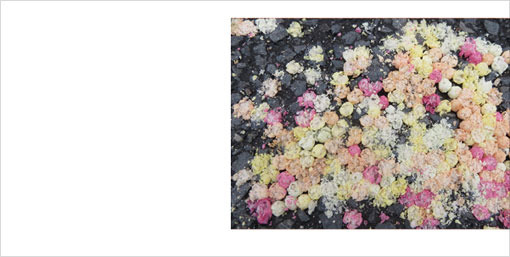
The artists in the exhibition “State of Matter” at Künstlerhaus Dortmund initially appear to adopt disparate positions, whether through their use of apparently unrelated media or distinct pictorial languages, but on closer inspection a number of shared conditions emerge: a state of limbo, fluctuations in temporal registers of consciousness, and a sense of separation between the body and the space surrounding it. What ultimately connects the individual works is that they each tackle the idea of energy, addressing charge, usage and potential in a variety of different contexts. “State of Matter” is a thematic exhibition whose theme is ultimately buried deep within the characteristics and potentialities of the works, rather than at a surface level – the state of matter principle is thus the curatorial objective.


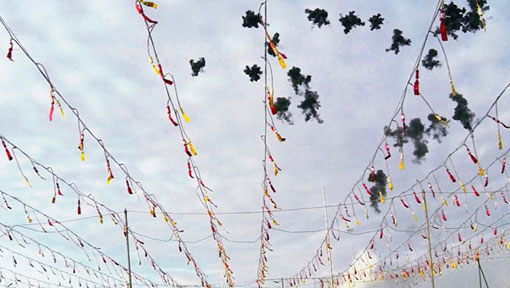
The movie is a registration of their artwork/day-light fireworks for the opening of a new theater in The Hague at the harbor. A ceremonial performance to get rid of the evil spirits.
Christian van der Kooy (1983 Goes, photographer and artist) and Onno Dirker (1965 Rotterdam, artist) work on a regular basis on projects to investigate the use and design of public space in its broadest sense.
Listing, analyzing and illustrating reality in a new context is the keynote in their work. Any landscape is formed by a myriad of layers, whether they are cultural or economic, physical or metaphysical. Sense of place lies at the heart of their work. Their growing body of work contains concepts, films and audio-scapes.
www.dirker.nl
www.christianvanderkooy.com
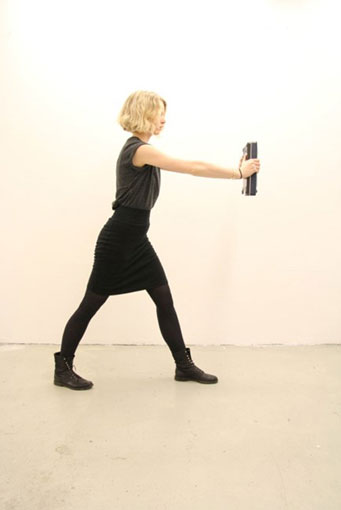
Elisabeth Heil’s works locate themselves at the interface between performance and installation/object. She develops her performances in cooperation, or rather in close exchange, with other artists and performers. For instance, in her performative research project COMPETITIVE EVALUATION (2013) the artist challenges the performers to compete against each other, their performances each being individually assessed against those of their ‘opponents.’ For XXL (2013) however, she has made a mobile structure – an exoskeleton that expands and modifies the body of the performer, turning him into a cyborg. The performer therefore becomes a component of XXL, rather than an autonomous being. Social structures, patterns and norms of behaviour as well as the therein inscribed mechanisms serve as a resonating space to the works as they take on and convert the social ‘formatting’ which has been imprinted over the course of a lifetime.
www.elisabethheil.de
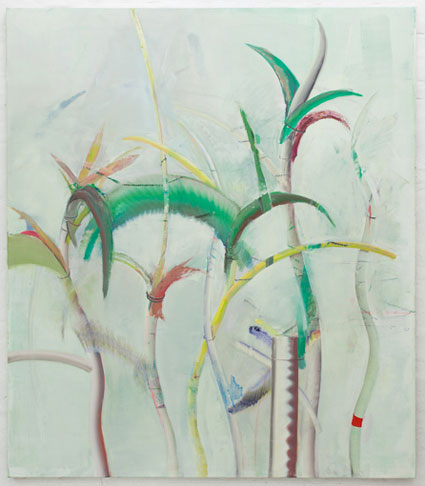
For many years, Fee Kleiss has been developing a strange new world of fictitious botany, in which we encounter seemingly familiar but ultimately non-existent species and taxonomies. Sometimes we can walk among the flora and fauna, and sometimes we can merely circumambulate views of landscapes where we learn about pollination, heliotropism, cleistocarpy and, of course, photosynthesis. Here, the complete morphology of plants – leaf and blossom, fruit and root – enjoy a gentle attentiveness, equally strange and subtle. (Zoë Claire Miller)
www.feekleiss.de
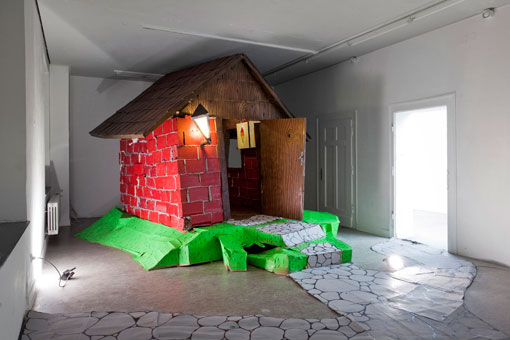
The precise observation and recording of his immediate everyday environment with all its details, peculiarities and curiosities is the starting point for Fabian Nehm’s artistic work. Dealing with such diverse subjects as mini golf clubs, systems of currency exchange, floating clouds or Vincent van Gogh’s sunflower paintings, Nehm analyses and mimics these phenomena in his own unique way as a means of comprehending the world at large. (Dr. Anne Schloen)
www.fabian-nehm.de
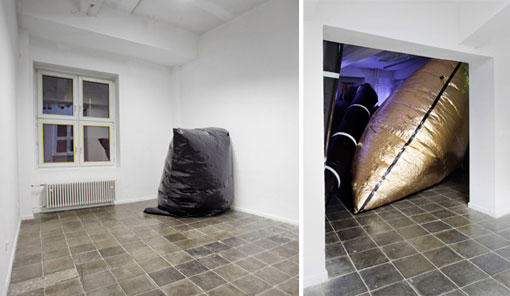
When he works with sculptural means, Becker Schmitz treats the respective space in a way that is highly particular. With the simplest of materials – found wooden batons, adhesive tape – he builds dynamic structures, which he wedges between the walls and ceilings, or he fills the exhibition space with inflatable, cumbersome modules, which force the viewer to rethink classical spatial perception. His minimal or obsessive interventions make use of an invasive strategy, which underscores the characteristics of the space and – because they are so obtrusive – simultaneously causes these to disappear altogether. (Emmanuel Mir, engl. von Gerard Goodrow)
www.beckerschmitz.com